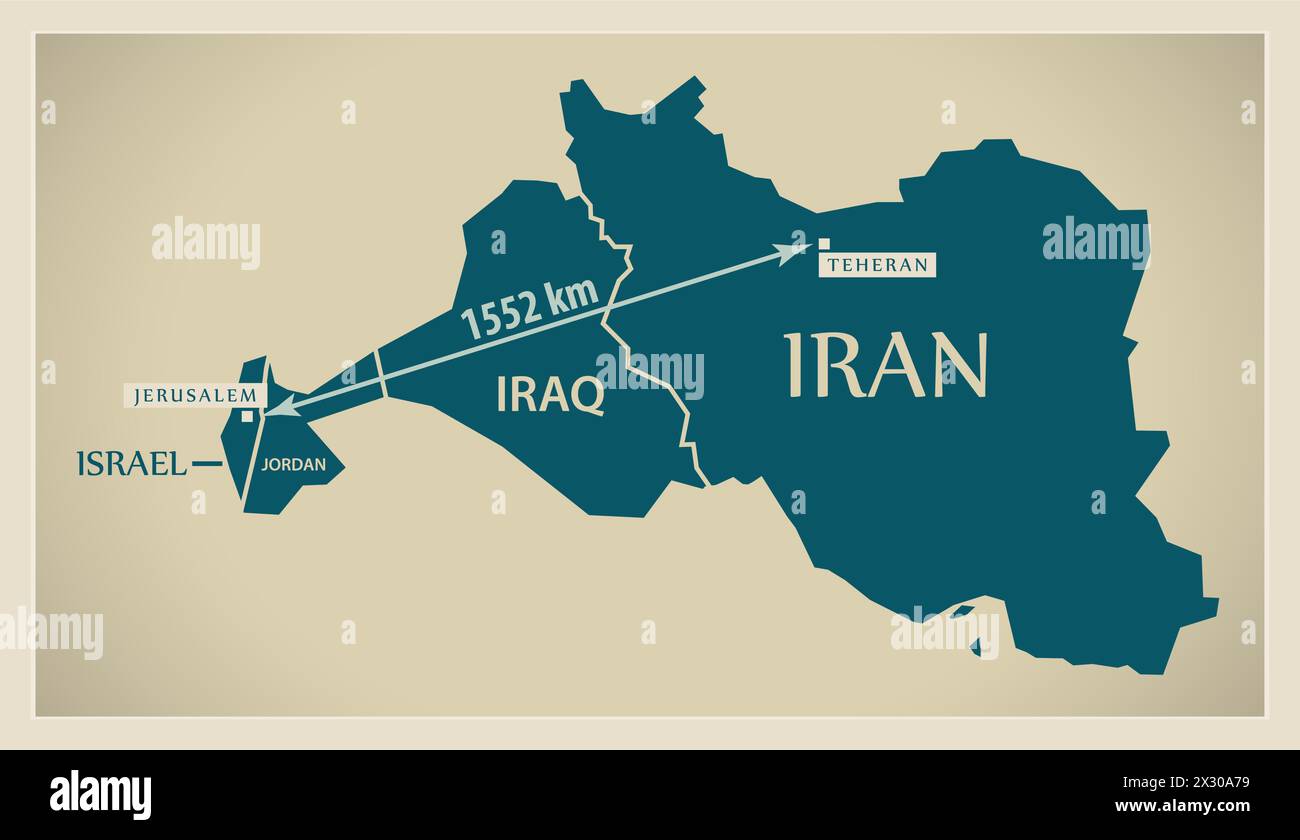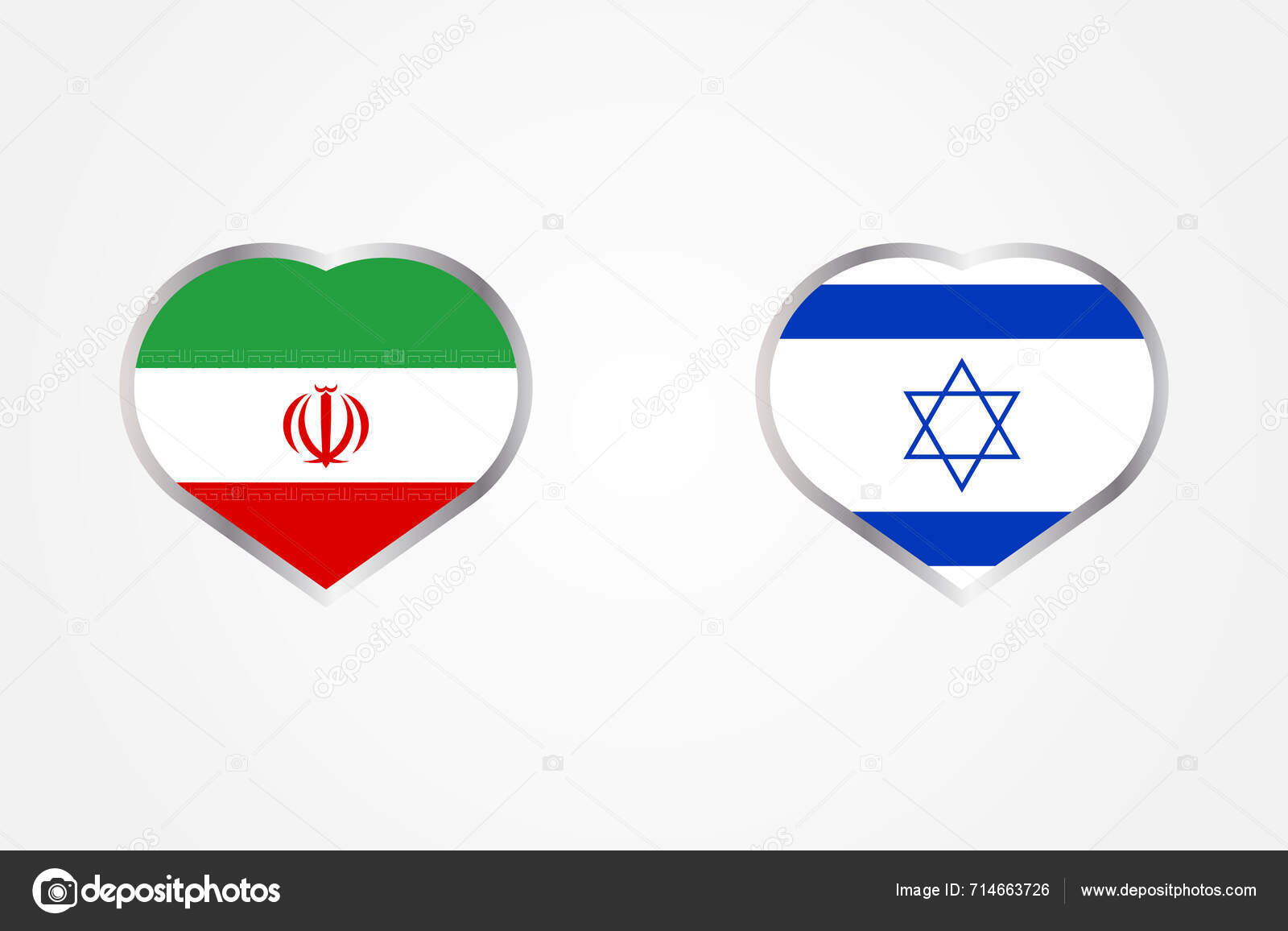Understanding The Distance Between Iran And Israel: More Than Just Miles
The geographical distance between Iran and Israel is a topic often discussed in geopolitical circles, yet its nuances are frequently overlooked. While a simple number might define the physical separation, the true "distance" between these two nations is far more complex, encompassing not only kilometers and miles but also layers of political tension, historical context, and strategic implications. Understanding this multifaceted distance requires delving beyond mere measurements to grasp the profound implications for regional stability and international relations.
This article aims to provide a comprehensive look at the various interpretations of the distance between Iran and Israel, drawing on factual data to illuminate the geographical realities. From the shortest air travel paths to the practicalities and costs of theoretical journeys, we will explore how a seemingly straightforward metric can hold such significant weight in the contemporary world. Join us as we unravel the layers of this critical geographical and geopolitical divide.
Table of Contents
- The Crow Flies: Understanding the Direct Air Distance
- Key Cities: A Closer Look at Urban Centers' Distances
- Air Travel: How Long Does It Really Take?
- Beyond Air: Driving Distances and Other Modes
- The Geopolitical Chasm: Distance in a Non-Geographical Sense
- Economic Considerations: The Cost of Crossing the Divide
- The Strategic Significance of Distance
- Conclusion: The Multidimensional Distance
The Crow Flies: Understanding the Direct Air Distance
When we talk about the "distance between Iran and Israel," the most straightforward measurement is often the "as the crow flies" or direct air travel distance. This refers to the shortest possible straight line between two points on a map, disregarding any geographical obstacles or political boundaries. According to available data, **the air travel (bird fly) shortest distance between Israel and Iran is 1,789 kilometers (1,112 miles)**. This figure represents the absolute minimum geographical separation, a theoretical line drawn across the sky. It's important to note that this direct measurement is a purely geographical concept. It does not account for the complexities of international airspace, flight paths, or the complete absence of direct diplomatic or travel routes between the two nations. This 1,789 km figure serves as a foundational understanding of their proximity, illustrating that while not immediate neighbors, they are certainly within a range that makes interactions, both benign and hostile, geographically feasible. The concept of this direct line is crucial for understanding the potential reach of various systems, from communication signals to military capabilities, even if actual travel is vastly different.Key Cities: A Closer Look at Urban Centers' Distances
While the general country-to-country distance provides a broad overview, a more granular understanding emerges when examining the distances between specific major cities. These measurements often reflect the practicalities of travel and the strategic relevance of urban centers. The data reveals slightly varying figures depending on which cities are used as reference points, underscoring the vastness of both countries and the importance of precise coordinates. For instance, the general distance between an "Iran city" (located at longitude 51.417655, latitude 35.657655) and an "Israel city" (located at longitude 35.207655, latitude 31.767655) is cited as **1,558 kilometers (968.5 miles)**. This slight variation from the overall country-to-country average highlights that specific points within these large landmasses will naturally have different exact distances.Tehran to Jerusalem: A Capital-to-Capital Perspective
When focusing on the capitals, the figures become even more specific and carry significant symbolic weight. The direct distance between Tehran, the capital of Iran, and Jerusalem, often considered the capital of Israel, is approximately **1,770 kilometers (1,100 miles)**. Another data point specifically states the distance between Tehran and Jerusalem as **1,559 kilometers (968 miles)**. This slight discrepancy might arise from different precise coordinates used for "Jerusalem" or different calculation methods. Regardless, both figures place the two capitals within a considerable but not insurmountable range. This capital-to-capital measurement is particularly relevant for understanding the strategic implications, as these cities represent the political and administrative hearts of their respective nations.Tehran to Tel Aviv: Measuring the Economic Hubs
Beyond the political capitals, Tel Aviv serves as a major economic and cultural hub in Israel. The distance between Tehran, Iran, and Tel Aviv, Israel, is measured at **1,585 kilometers (985 miles)**. This figure is slightly greater than the Tehran-Jerusalem distance, reflecting Tel Aviv's position further west along the Mediterranean coast. Understanding this specific distance is important for assessing the reach of various systems and for conceptualizing the geographical proximity of key population centers. Whether considering Jerusalem or Tel Aviv, the core message remains: the physical **distance between Iran and Israel** is substantial, yet manageable by modern means of travel and projection, which forms the basis of many strategic discussions.Air Travel: How Long Does It Really Take?
While the "as the crow flies" distance gives us a straight line, real-world air travel involves speed and time. Assuming an average airplane speed of 560 miles per hour, the theoretical flight duration for the shortest path from Israel to Iran is remarkably short. Data suggests that if you travel with an airplane from Israel to Iran, it takes approximately **1.99 hours to arrive**. Similarly, a flight from Iran to Jerusalem would take about **1.93 hours**. These figures, while mathematically sound based on the direct distance and average speed, are purely hypothetical in the current geopolitical climate. There are no direct commercial flights between Iran and Israel. Any actual travel between the two countries would involve multiple layovers, circuitous routes through third countries, and significant time and cost. The fact that a direct flight would take less than two hours underscores how quickly geographical proximity can translate into potential reach, a factor that weighs heavily on strategic considerations. The ease of calculating this direct flight time, and the display of such routes on interactive maps, serves to highlight the stark contrast between geographical possibility and political reality.Beyond Air: Driving Distances and Other Modes
While air travel is the fastest theoretical means, the concept of a "driving distance" between Iran and Israel also arises. The data mentions the possibility to "calculate the driving distance and how far is it the travel time," and that an "Iran to Israel travel route / road map is available." However, it is crucial to understand that a direct overland route for travel between Iran and Israel is practically non-existent for civilians or commercial purposes due to the intervening countries and the severe political tensions. Any hypothetical driving route would necessitate passing through multiple nations, such as Iraq, Syria, or Jordan, all of which present significant political and security challenges, and none of which facilitate direct transit between Iran and Israel. Therefore, while a map might theoretically plot a road path, the real-world application of such a route is impossible under current conditions. This emphasizes that the **distance between Iran and Israel** is not merely about kilometers but about impassable borders and political barriers that render conventional land travel unfeasible. The availability of a "road map" is a technicality; the practical reality is one of profound separation.The Geopolitical Chasm: Distance in a Non-Geographical Sense
Perhaps the most significant aspect of the "distance between Iran and Israel" is not measured in miles or kilometers, but in the vast geopolitical chasm that separates them. The provided data explicitly states that the direct distance "does not take into account any geopolitical restrictions or airspace considerations." This is a critical point. Despite the relatively short air travel time, the reality is that no direct travel or trade occurs. This geopolitical distance is defined by decades of animosity, ideological opposition, and proxy conflicts across the Middle East. Iran does not recognize Israel's existence, and vice versa. This lack of diplomatic relations translates into closed borders, restricted airspace, and a complete absence of direct communication channels. The physical **distance between Iran and Israel** is thus amplified by an unbridgeable political divide, making direct interaction impossible and forcing any engagement, whether diplomatic or otherwise, to occur through intermediaries or indirect means. This non-geographical distance is what truly defines their relationship and shapes regional dynamics.Economic Considerations: The Cost of Crossing the Divide
Even for the most determined individuals seeking to travel between Iran and Israel, the economic costs reflect the circuitous and indirect nature of the journey. Data indicates that "the cheapest way to get from Iran to Israel costs only $451, and the quickest way takes just 6¾ hours." This seemingly low cost and relatively short travel time (compared to the direct flight time of less than two hours) are deceptive. The "cheapest way" at $451 likely involves a complex itinerary with multiple flights and layovers in third countries that maintain diplomatic relations with both nations. For example, a traveler might fly from Tehran to Istanbul, then from Istanbul to Tel Aviv. This adds significant time, complexity, and indirect costs beyond the ticket price, such as visa requirements for transit countries, additional accommodation, and the sheer inconvenience of extended travel. The 6¾ hours travel time, while quicker than some multi-day overland journeys, is still significantly longer than the direct flight time, highlighting the practical barriers. This economic barrier, while perhaps not prohibitive for all, serves as a tangible manifestation of the political **distance between Iran and Israel**, making casual or direct travel effectively impossible.The Strategic Significance of Distance
While the geographical **distance between Iran and Israel** might seem like a simple number, its strategic implications are profound, especially in the context of military capabilities and regional security. The "as the crow flies" measurement becomes highly relevant when discussing the range of missiles, drones, and other military assets.Military Reach and Deterrence
The 1,789 km (1,112 miles) direct distance means that both nations possess, or are developing, capabilities to reach each other's territories with various forms of weaponry. Iran's ballistic missile program, for instance, has ranges that comfortably cover Israel. Similarly, Israel's own military capabilities, including its air force and potential long-range strike options, are designed with the ability to operate across significant distances within the region. This geographical proximity, coupled with advanced military technology, creates a complex deterrence dynamic where each side's capabilities must account for the other's reach. The short theoretical flight times further underscore the speed with which a conflict could escalate, making early warning systems and rapid response protocols critical.Logistical Challenges and Opportunities
Beyond direct military confrontation, the distance also plays a role in logistical planning and the projection of influence. For Iran, supporting proxy groups closer to Israel, such as Hezbollah in Lebanon or various militias in Syria, shortens the operational distance for its allies, even if the direct geographical gap remains. For Israel, maintaining its qualitative military edge and intelligence gathering capabilities requires overcoming this distance through advanced surveillance, reconnaissance, and diplomatic efforts to counter Iranian influence in neighboring states. The geographical reality thus shapes not only direct military planning but also the broader strategic landscape, influencing alliances, proxy conflicts, and diplomatic maneuvers across the Middle East. The interplay of physical distance and geopolitical intent continues to define the dynamic between these two powerful regional actors.Conclusion: The Multidimensional Distance
The "distance between Iran and Israel" is far more than a simple numerical value. While the shortest direct air travel path is approximately 1,789 kilometers (1,112 miles), and city-to-city measurements like Tehran to Jerusalem or Tel Aviv hover around 1,558-1,585 kilometers (968-985 miles), these figures only tell a fraction of the story. The theoretical flight time of less than two hours starkly contrasts with the practical reality of complex, indirect journeys costing hundreds of dollars and taking many hours, or even days, due to the complete absence of direct routes. Ultimately, the true distance between Iran and Israel is defined by an immense geopolitical chasm, a profound lack of diplomatic relations, and deeply entrenched ideological differences. This non-geographical distance renders direct travel, trade, or even communication virtually impossible, transforming what might be a short hop into an impassable gulf. Understanding this multifaceted distance—from the precise geographical measurements to the pervasive political barriers and strategic implications—is crucial for anyone seeking to comprehend the complexities of the Middle East. It underscores how geography, while fundamental, is always interpreted and shaped by human politics and historical narratives. We encourage you to explore more articles on our site to deepen your understanding of regional dynamics and international relations. What are your thoughts on how geographical distance intersects with political realities? Share your perspectives in the comments below!- Bob Saget Wife Death
- Xxx Preet Jatti
- Ipcam Guys Telegram
- How To Bypass Deviantart Subscription
- Does Aoc Have A Life Partner

Modern Map - Distance between Jerusalem ISRAEL and Teheran IRAN Stock

Iran Israel War Israel Iran Hearts Concept Flags Iran Israel Stock

israel iran tension Prompts | Stable Diffusion Online